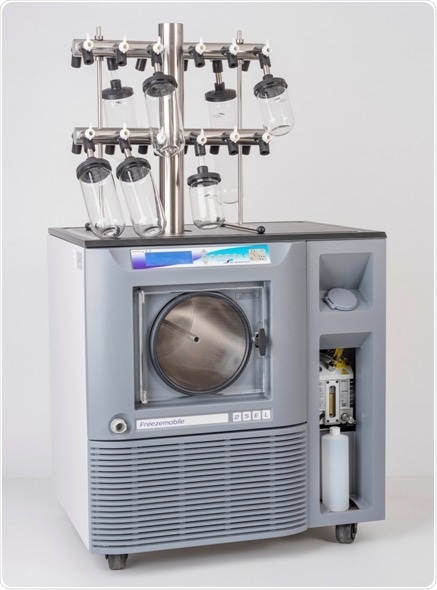Feb 12 2018
The Freezemobile freeze dryer from SP Scientific is designed to provide a convenient and flexible solution for high-quality preparation of peptides, proteins, plant materials and organic tissue.

Unlike many traditional freeze dryers that employ coil condensers, Freezemobile freeze dryers use a smooth walled condenser which enables fast defrost & removal of ice for faster turn-around time and also alleviates vapor port ice blockages other systems are prone to.
Offered in 25 and 35-liter condenser sizes, the Freezemobile provides the largest capacity commercially available for manifold/flask freeze dryers. With a -85°C condenser to suit optimized removal of a wide variety of solvents, Freezemobile freeze dryers can be configured for your exact processing requirements. Their flexibility makes them an ideal choice for labs with multiple users, as well as labs with high quantity of product throughput. Using a Freezemobile you can add or remove individual samples without interrupting the instrument thereby enabling users to continue their experimental process without having to wait for another freeze dryer to become available.
With a wide range of single and multi-tiered horizontal “T” type manifolds the Freezemobile can be used to dry multiple flasks simultaneously. Ay, - Freezemobile freeze dryers provide an optimized platform for drying large quantities of samples in bulk flask format. To improve the laboratory operating environment the Freezemobile can also be supplied with a low noise, oil-free vacuum pump.
Integral to the Freezemobile freeze dryer is a simple yet intuitive control system which offers a wide range of control features to meet the demands of virtually any application. Vacuum levels, condenser temperature, ambient room temperature and component status are all displayed on a clear LCD display, while alarms warn of any unwanted process deviations. .
The SP Scientific Freezemobile Shell Bath (FSB) helps to decrease manifold freeze-drying time. The FSB rotates your sample flask on its axis thereby coating the interior surface of the flask with frozen product. This increases the surface area of the product-to-energy input, as well as vapor removal helping to reduce the freeze-drying process to the shortest time possible when utilizing flasks and a manifold system.